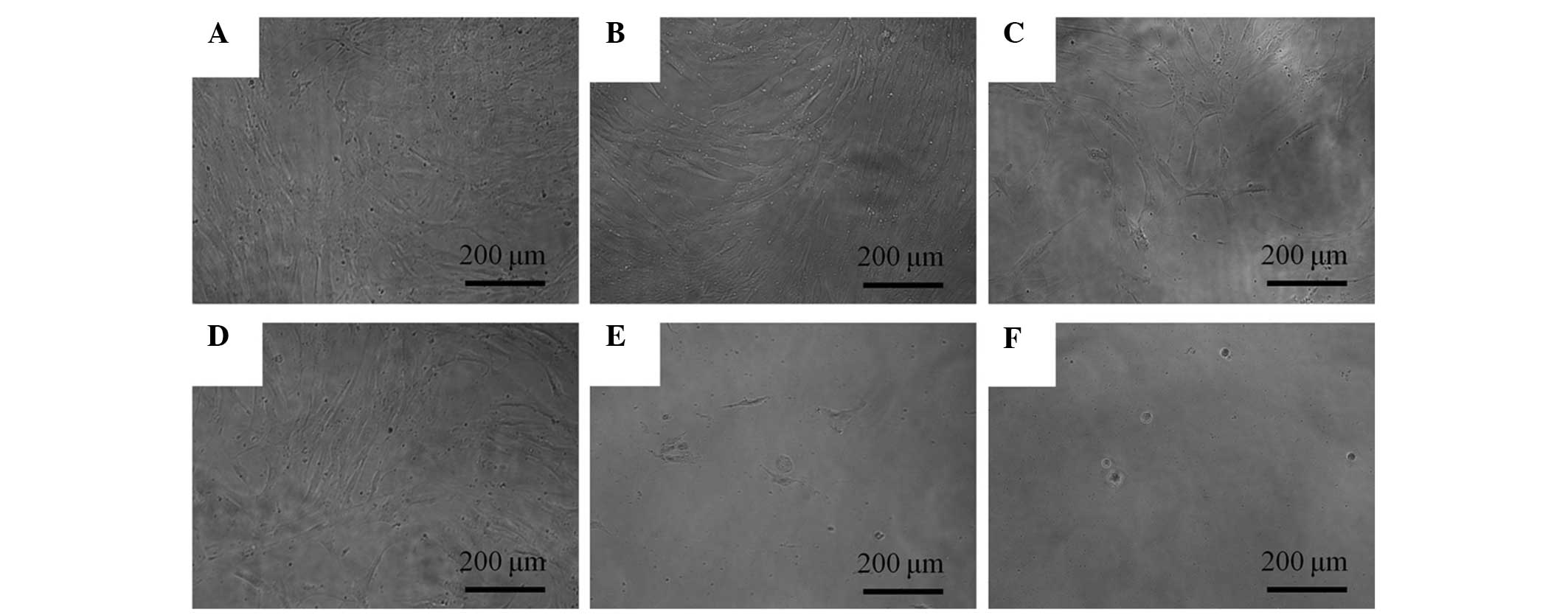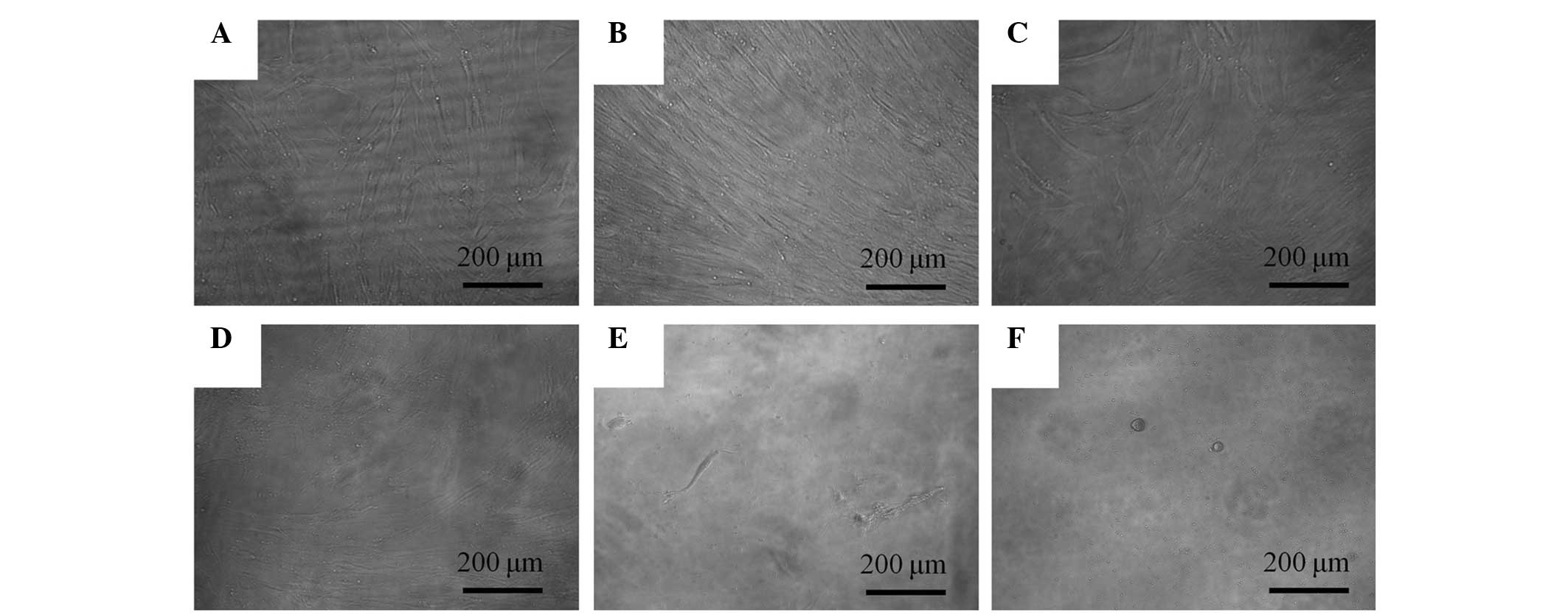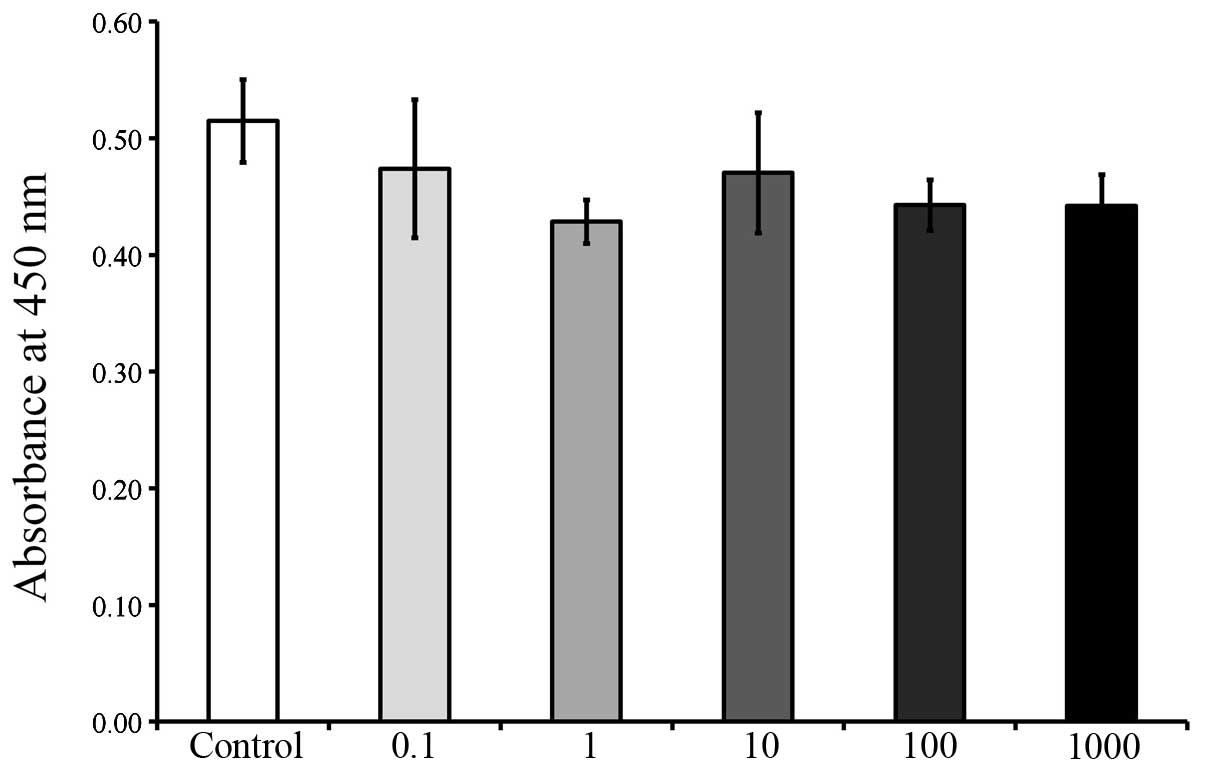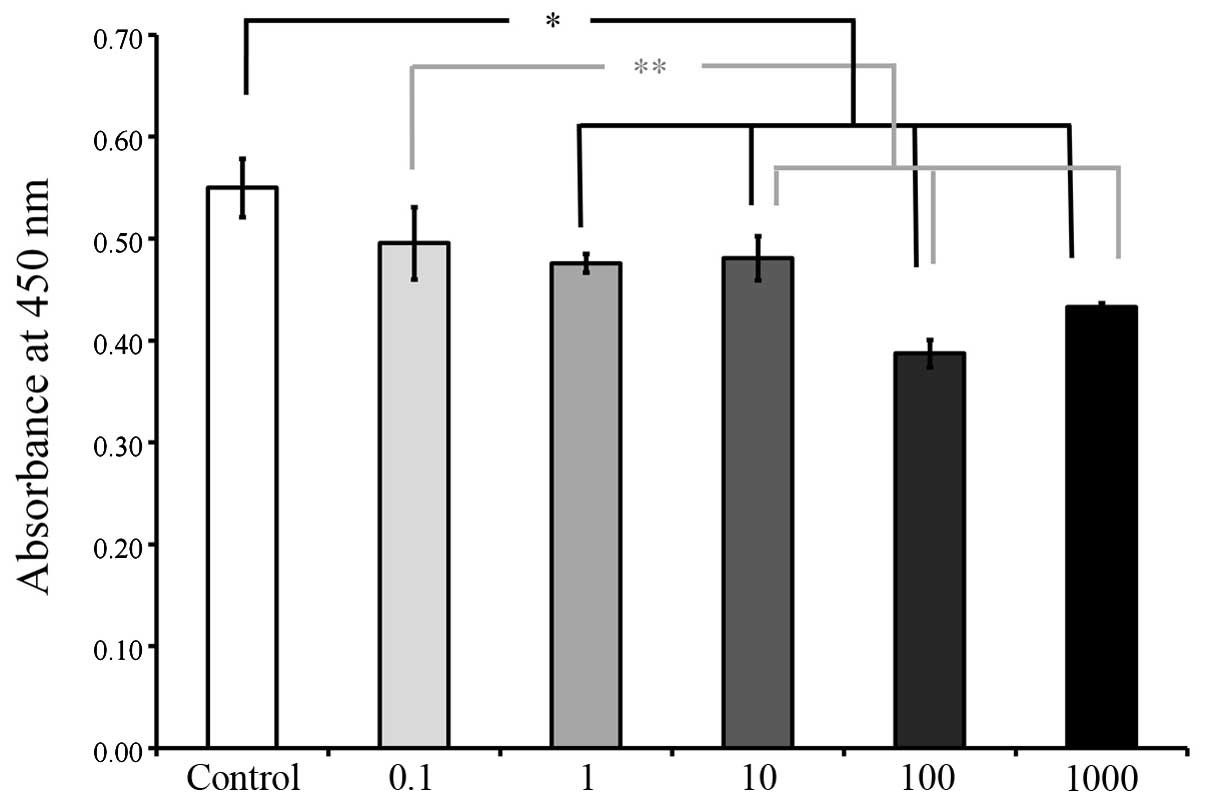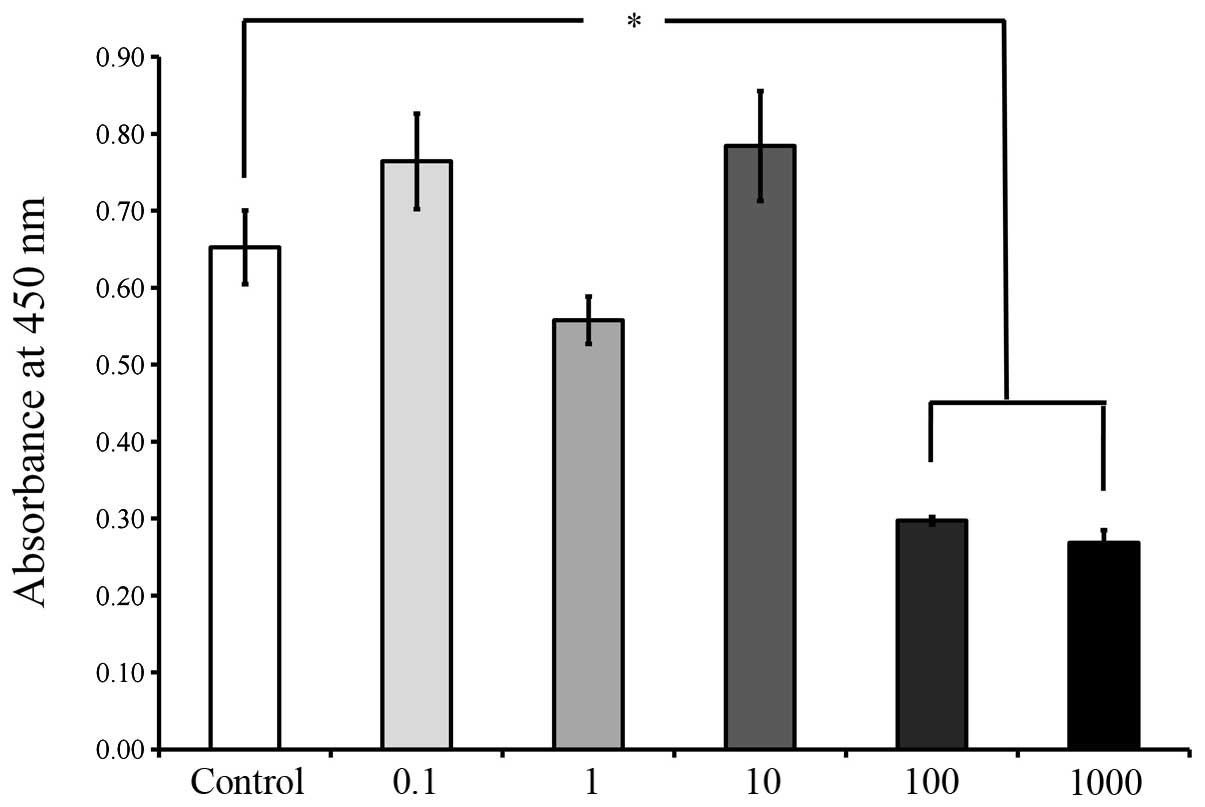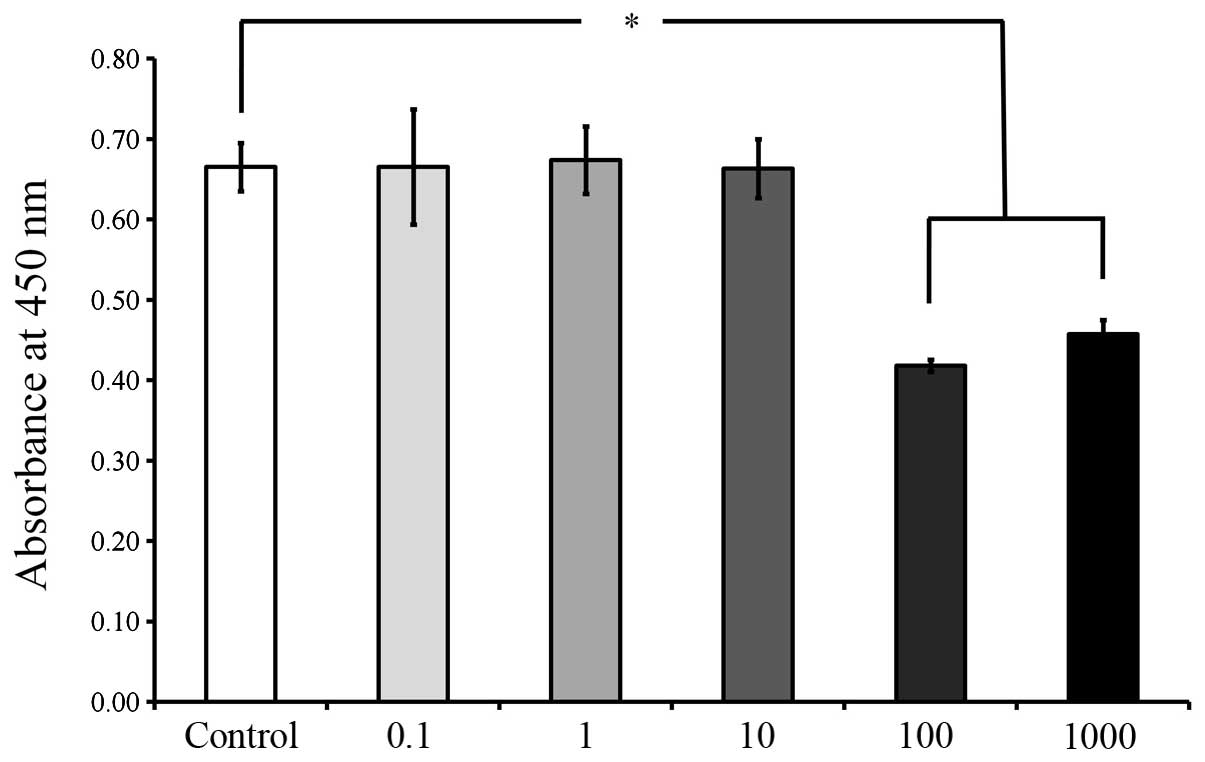|
1
|
Lee KH: Research and future trends in the
pharmaceutical development of medicinal herbs from Chinese
medicine. Public Health Nutr. 3:515–522. 2000.PubMed/NCBI
|
|
2
|
Feng Y, Wu Z, Zhou X, Zhou Z and Fan W:
Knowledge discovery in traditional Chinese medicine: state of the
art and perspectives. Artif Intell Med. 38:219–236. 2006.
View Article : Google Scholar : PubMed/NCBI
|
|
3
|
Oh SM, Kim J, Lee J, et al: Anticancer
potential of an ethanol extract of Asiasari radix against
HCT-116 human colon cancer cells in vitro. Oncol Lett. 5:305–310.
2013.PubMed/NCBI
|
|
4
|
Ramesh T, Lee K, Lee HW and Kim SJ:
Subacute toxicological evaluation of Asiasari radix methanol
extract. Drug Chem Toxicol. 32:243–251. 2009. View Article : Google Scholar : PubMed/NCBI
|
|
5
|
Jeon HC, Rho EJ, Kim HR and Yun YG: A
study on application of Radix Asari main blended prescription from
Dongeubogam. Korean J Oreint Med Prescription. 12:57–76. 2004.(In
Korean).
|
|
6
|
Jang JY, Lee JH, Shin HK, et al: Partially
purified Asiasari radix inhibits melanogenesis through
extracellular signal-regulated kinase signaling in B16F10 cells.
Int J Mol Med. 25:287–292. 2010.
|
|
7
|
Kamei T, Kondoh T, Nagura S, et al:
Improvement of C-reactive protein levels and body temperature of an
elderly patient infected with Pseudomonas aeruginosa on
treatment with Mao-bushi-saishin-to. J Altern Complement Med.
6:235–239. 2000. View Article : Google Scholar : PubMed/NCBI
|
|
8
|
Kim HM and Moon YS: Asiasari radix
inhibits immunoglobulin E production on experimental models in
vitro and in vivo. Immunopharmacol Immunotoxicol. 21:469–481. 1999.
View Article : Google Scholar
|
|
9
|
Han Y and Kim SJ: Memory enhancing actions
of Asiasari radix extracts via activation of insulin
receptor and extracellular signal regulated kinase (ERK) I/II in
rat hippocampus. Brain Res. 974:193–201. 2003.PubMed/NCBI
|
|
10
|
Kim KS, Kim NS, Kim SD, et al: Regulatory
effect of inflammatory reaction by Asiasari radix. Korean J
Orient Physiol Pathol. 19:779–784. 2005.
|
|
11
|
Zhou RH: Resource Science of Chinese
Medicinal Materials. China Medical and Pharmaceutical Sciences
Press; Beijing: 1993
|
|
12
|
Takara K, Horibe S, Obata Y, et al:
Effects of 19 herbal extracts on the sensitivity to paclitaxel or
5-fluorouracil in HeLa cells. Biol Pharm Bull. 28:138–142. 2005.
View Article : Google Scholar : PubMed/NCBI
|
|
13
|
Ramesh T, Lee K, Lee HW and Kim SJ: Acute
oral toxicity study of Asiasari radix extract in mice. Int J
Toxicol. 26:247–251. 2007. View Article : Google Scholar : PubMed/NCBI
|
|
14
|
Wang Y, Wang WL, Xie WL, et al: Puerarin
stimulates proliferation and differentiation and protects against
cell death in human osteoblastic MG-63 cells via ER-dependent
MEK/ERK and PI3K/Akt activation. Phytomedicine. 20:787–796. 2013.
View Article : Google Scholar : PubMed/NCBI
|
|
15
|
Meleti Z, Shapiro IM and Adams CS:
Inorganic phosphate induces apoptosis of osteoblast-like cells in
culture. Bone. 27:359–366. 2000. View Article : Google Scholar : PubMed/NCBI
|
|
16
|
Stoddart MJ: Cell viability assays:
introduction. Methods Mol Biol. 740:1–6. 2011. View Article : Google Scholar : PubMed/NCBI
|
|
17
|
Almazin SM, Dziak R, Andreana S and
Ciancio SG: The effect of doxycycline hyclate, chlorhexidine
gluconate, and minocycline hydrochloride on osteoblastic
proliferation and differentiation in vitro. J Periodontol.
80:999–1005. 2009. View Article : Google Scholar
|
|
18
|
Sekiya I, Larson BL, Smith JR, et al:
Expansion of human adult stem cells from bone marrow stroma:
conditions that maximize the yields of early progenitors and
evaluate their quality. Stem Cells. 20:530–541. 2002. View Article : Google Scholar
|
|
19
|
Kuznetsov SA, Friedenstein AJ and Robey
PG: Factors required for bone marrow stromal fibroblast colony
formation in vitro. Br J Haematol. 97:561–570. 1997. View Article : Google Scholar : PubMed/NCBI
|
|
20
|
Rodriguez AM, Elabd C, Amri EZ, Ailhaud G
and Dani C: The human adipose tissue is a source of multipotent
stem cells. Biochimie. 87:125–128. 2005.PubMed/NCBI
|
|
21
|
Wada MR, Inagawa-Ogashiwa M, Shimizu S,
Yasumoto S and Hashimoto N: Generation of different fates from
multipotent muscle stem cells. Development. 129:2987–2995.
2002.PubMed/NCBI
|
|
22
|
Ballini A, De Frenza G, Cantore S, et al:
In vitro stem cell cultures from human dental pulp and periodontal
ligament: new prospects in dentistry. Int J Immunopathol Pharmacol.
20:9–16. 2007.PubMed/NCBI
|
|
23
|
Marynka-Kalmani K, Treves S, Yafee M, et
al: The lamina propria of adult human oral mucosa harbors a novel
stem cell population. Stem Cells. 28:984–995. 2010.
|
|
24
|
Nagatomo K, Komaki M, Sekiya I, et al:
Stem cell properties of human periodontal ligament cells. J
Periodontal Res. 41:303–310. 2006. View Article : Google Scholar : PubMed/NCBI
|
|
25
|
Yoshimura H, Muneta T, Nimura A, et al:
Comparison of rat mesenchymal stem cells derived from bone marrow,
synovium, periosteum, adipose tissue, and muscle. Cell Tissue Res.
327:449–462. 2007. View Article : Google Scholar : PubMed/NCBI
|
|
26
|
Hidaka S, Okamoto Y and Liu SY: Natural
products effective on the in vitro formation of calcium phosphate
precipitates. J Trad Med. 26:201–209. 2009.
|

















